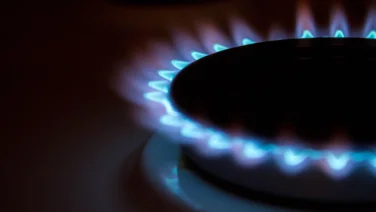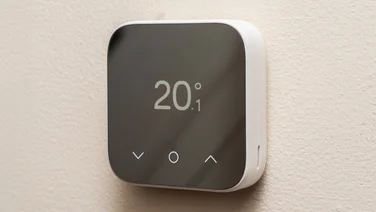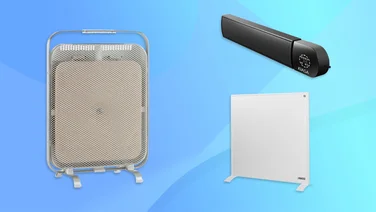To help us provide you with free impartial advice, we may earn a commission if you buy through links on our site. Learn more

With energy bills taking a bigger bite of business costs than ever, switching to solar could make a serious difference to your balance sheets. Commercial solar panels are now affordable enough to pay for themselves in just a few years, making them a canny investment for firms of all sizes.
Then there are the green business benefits of solar. Giant UK brands from Tesco to Associated British Ports have slashed their carbon emissions, met green targets and boosted their eco reputations after making the switch to solar.
But with businesses commonly needing many times more solar panels than the average household, commercial solar panels come with a large upfront cost. Not all organisations have the spare cash that Tesco does.
In this article, we’ll run through the costs and benefits of switching to solar, and help you work out how many solar panels you’d need to free your business from expensive grid electricity forever.
Get a free quote for solar panel installation today
Fill in our quick survey and we’ll match you with a solar panel installation expert.
What are commercial solar panels?
Are commercial solar panels different from residential solar panels?
In most cases, no – they’re the same panels that households use. Commercial solar panels used to be larger than those used in residential installations, but most businesses now use standard 2m x 1m solar PV (photovoltaic) panels made from either monocrystalline silicon or cheaper polycrystalline.You can still get slightly longer panels for commercial use, with an extra row of solar ‘cells’ (72 versus 60). They may be a better fit for some sites, but they’re no more efficient. Thanks to evolving solar technology, standard sized panels are now the most efficient you can buy.
The main difference between commercial solar panels and residential solar panels is in the overall size of the solar PV system, which is usually much bigger in commercial applications. Some firms have PV systems thousands of times bigger than the average household array.
Looking for the best price on solar panels for your home?
Find the right supplier for you
How many solar panels does my organisation need?
The more energy your business uses, the more solar panels you will need.
At the extreme end of the scale, Apple is reported to have a solar capacity of 398 MWp (megawatt peak) via on-site and off-site solar PV systems that are so big they’re called solar farms. This solar set-up is so vast it can generate 100,000 times more electricity than the average residential system.
A small to medium enterprise (SME) might only need around 20 or 30 400W solar panels. The overall system would only be a few times bigger than a standard household array.
Medium to large businesses might need a solar PV system around the same size as that installed by Freemantle School in Southampton, whose 54 kWp (kilowatt peak) system uses standard Jinko solar panels. The system is around 12 times bigger than the average household system.
Here’s a rough guide to the number of standard 400W solar panels needed to cover different levels of electricity usage in a year:
- Microbusiness using 10,000 kWh/year: 20-25 solar panels
- Small business using 20,000 kWh/year: 50 solar panels
- Medium business using 30,000 kWh/year: 75 solar panels
- Large business using 50,000 kWh/year: 125 solar panels

A specialist commercial solar installer would work with you to calculate the number of solar panels you need, based on your organisation’s energy needs.
Fremantle School, for example, worked with Empower Energy to plan and install its solar panels. According to Empower, the move to solar has cut the school’s energy bill by £24,304 per year and reduced its annual carbon emissions by just under 52,000 kilos.
READ NEXT: How many solar panels do I need?
How are solar panels installed on business sites?
Most commercial solar panels are installed on the roof of the site where electricity is needed. The basic steps are the same as those in our article on how solar panels are installed, although the process is likely to take longer.
Businesses are also more likely to face challenges such as limited roof space, shared roofs, and flat roofs. Your installer will survey your roof and work with you to devise the best solution for the site. If your roof isn’t big enough for all the panels you need, ground-mounted and even wall-mounted panels may be added to help cover your energy needs.
Looking for the best price on solar panels for your home?
Find the right supplier for you
Will I need planning permission for commercial solar panels?
Solar panels on commercial roofs are covered by Permitted Development Rights, so in most cases you can install them without applying for planning permission.
There are a few exceptions. If your business premises is a listed building, conservation area, national park or world heritage site, you may need to apply for consent. Discreet panels such as in-roof solar panels and solar roof tiles may be more acceptable to the authorities, but they are more expensive than standard panels and tend to be used only by residential customers.
Ground-mounted solar panels don’t need planning permission if the array is smaller than 9 square metres (3m x 3m). That’s too small for many commercial applications, so you will need to check before going ahead.
To apply for planning permission and to find out more about what you can and can’t do, head for the UK’s Planning Portal.
READ NEXT: Do you need planning permission for solar panels?
How much do commercial solar panels cost?
Commercial solar panel systems cost roughly £1,000 per kilowatt including installation and aftercare. A typical small business using 20,000 kWh of electricity per year would need 50 panels, setting them back around £20,000.
That’s a lot of money, but commercial solar panels break even faster than residential solar panels. They take an average six to eight years to pay for themselves through dramatically reduced electricity bills, compared with eight to nine years for home users.

This faster break-even time is largely because businesses tend to use electricity at the same time that their panels produce it: during the day, while the sun shines.
Can I get a business grant for solar panels?
In the UK there are no national government grants for commercial solar panels. With the Energy Bill Discount Scheme for UK businesses set to end on 31 March 2024, cash-strapped firms may be forgiven for feeling concerned.
Some regions offer local grants. Most regional grants max out at around £5,000, but Dorset’s Low Carbon Dorset scheme is more generous. The scheme, which covers up to 40% of your costs to a maximum £250,000, has helped organisations from Lyme Regis Baptist Church to a fish and chip shop make the switch to solar.
There’s also the SEG (Smart Export Guarantee), although it won’t make much difference to your business’s bottom line. Businesses are only allowed to sell up to 5 MW (megawatts) of electricity back to the national grid, which at current tariff rates adds up to a mere £250 per year. Nice bonus for a household, perhaps, but barely a scratch for a business.
Looking for the best price on solar panels for your home?
Find the right supplier for you
Can I get private finance for solar panels?
Private financing is your best chance to cut the cost of solar panels for your organisation. Power purchasing agreements (PPAs) provide panels and installation for free upfront, then let you effectively rent them at a discounted rate for 25 years.
PPAs are run by leading UK solar providers in partnership with financial providers. In many cases, the providers let the customers keep the solar PV systems once the 25-year period is over. Given that most new solar panels are guaranteed to work for 40 years, that doesn’t sound like a bad deal at all.






